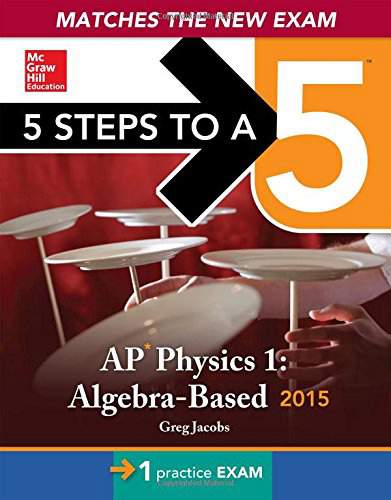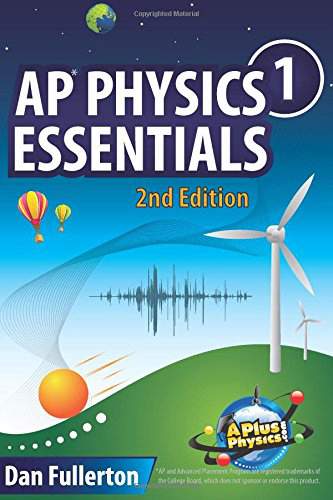Connecting...

This is a quick preview of the lesson. For full access, please Log In or Sign up.
For more information, please see full course syllabus of AP Physics 1 & 2
For more information, please see full course syllabus of AP Physics 1 & 2
AP Physics 1 & 2 Circuit Analysis
Lecture Description
Now that we have the mathematics out of the way it’s time to really get into the details of circuits. Up till now current has just flown from the positive to the negative end of the voltage source, but now you’ll learn about the different rules for things like junctions in a parallel circuit. The best thing to remember is the entire circuit itself is simply in series, but with possible parallel portions. To make it easier, work inside-out and focus on the smaller portions before looking at the big picture. No matter how big the circuit, the diagram can be easily handled with a bit of patience and practice.
Bookmark & Share
Embed
Share this knowledge with your friends!
Copy & Paste this embed code into your website’s HTML
Please ensure that your website editor is in text mode when you paste the code.(In Wordpress, the mode button is on the top right corner.)
×
Since this lesson is not free, only the preview will appear on your website.
- - Allow users to view the embedded video in full-size.
Next Lecture
Previous Lecture










































 Answer Engine
Answer Engine


3 answers
Mon Apr 15, 2019 6:03 AM
Post by James Glass on February 11, 2018
Hello, In example 11 when analyizing the 2 voltage source circuit, why doesn't the current from the 12V source also have to go through R2? Similar question for the other source, why doesn't the current form the 16V source also have to go through R1? It seems like both the 12V and the 16V current would have to travel around the smaller loop and the larger outside loop. Thanks.
1 answer
Sat Jan 14, 2017 3:16 PM
Post by Vivian Ni on January 13, 2017
At 33:02, I understand how you got 3.2 V, but how is V the same for both R2 and R3? The resistance is different for both, so I'm confused as to how the voltage is the same. Thanks!
1 answer
Thu Aug 20, 2015 8:05 AM
Post by Anh Dang on August 19, 2015
Sorry about this question, but can you remind me what exactly a potential drop is?
2 answers
Thu Jun 25, 2015 3:45 PM
Post by Derek Boutin on June 25, 2015
Professor Fullerton, the lecture was extremely helpful. However, I do have two questions. In Example 11, why do you use -12 and -16? Also, in Example 13, why do you start with 30 Volts and end with 0 Volts? Thanks!
1 answer
Mon Feb 23, 2015 9:03 PM
Post by Yahaira Leon on February 23, 2015
Why did you divide 50*30 by 80
1 answer
Sat Mar 29, 2014 7:39 AM
Post by Hoa Huynh on March 29, 2014
Dear Professor,
At 46:11, I do not understand why the voltage right below the emf 5V is 0. If we use the loop, the current should flow from the + side to -side. Please, explain me how can we know the current flow on what way. Thank you
1 answer
Wed Mar 5, 2014 5:42 AM
Post by ibrahim shawi on March 5, 2014
is it possible to use VIRP for this problem?
1 answer
Wed Mar 5, 2014 5:44 AM
Post by ibrahim shawi on March 4, 2014
for example 13 complex circuit with meters, You labeled the first resistor R1 and then the second one also as R1 is it because they are in series? also in the beginning of the equation you made the 30 negative.... is that because of equation..... kirchhoff's law?
1 answer
Last reply by: ibrahim shawi
Tue Mar 4, 2014 9:52 PM
Post by ibrahim shawi on March 4, 2014
for the basic parallel circuit analysis lecture at 20:53 you said that total R is equal to 667 and i see how you got it but when i solve for the answer using 1/R=1/R+1/R+1/R I get 1.5x10^-3....
1 answer
Thu Jan 30, 2014 7:38 AM
Post by Karpis Sanosyan on January 29, 2014
You really help me understand, but i don't understand how you get the voltage by putting one side 0
?
1 answer
Sun Oct 27, 2013 10:01 AM
Post by Yadira Perez on October 26, 2013
Excellent explanations, I was so lost in class but you have made a difference thank you!!
1 answer
Wed May 8, 2013 6:12 AM
Post by Nawaphan Jedjomnongkit on May 8, 2013
Thank you so much for great lecture and I like your teaching style that give a lot of example questions after theory part. Yet I still not so confident about circuit analysis with 2 voltage sources. Is it possible that the voltage from one sauce cancel the other like when I put batteries in wrong side will have no power? Take care , don't catch a cold ^_^